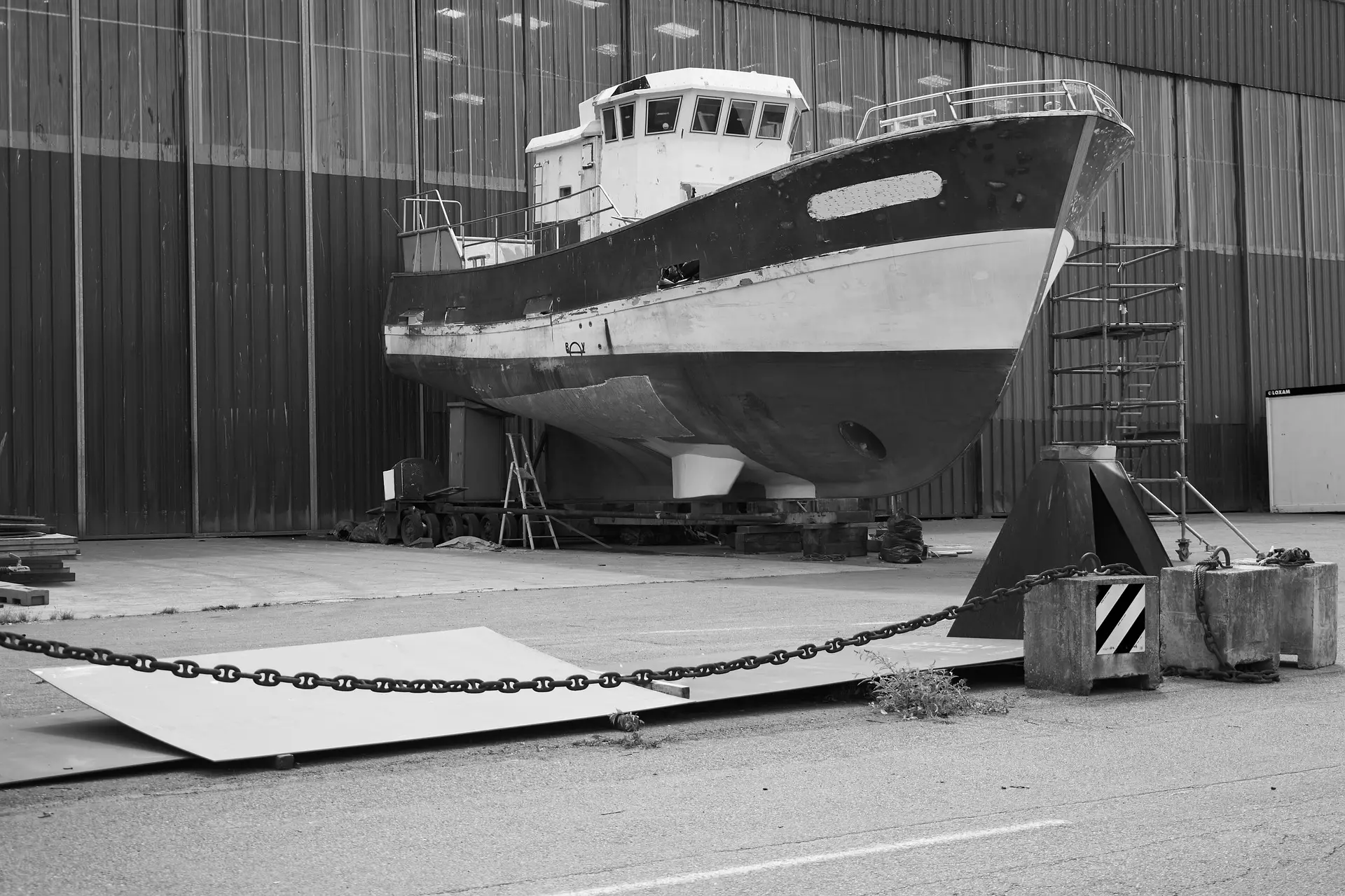We have all been on board vessels that are prone to rocking in rough wave conditions due to wind or passing boat traffic. Boating is widespread in Georgia, South Carolina, and North Carolina, between the ample fresh and salt bodies of water. Whether you fish, pleasure cruise, dive, or head to the beach, stabilizers are highly beneficial, no matter if they are gyro stabilizers or fin stabilizers. Today’s technology allows yacht owners to utilize gyro stabilizers aboard mega-yachts instead of outdated external rotating fins. Here are the answers to 5 frequently asked boat stabilizer questions.
What Are Boat Stabilizers
A stabilizer on a vessel works in two different ways. Boats and yachts are fitted with either one of two types of boat stabilizers. Fin or gyro stabilizers depending on the size and hull design. Here are the two methods of how to stabilize a boat.
Fin Stabilizers
Fin stabilizers are bulky and include fin-shaped protrusions from the port and starboard hull beneath the waterline.
Boat stabilizer fins rotate thus pushing water to stabilize the vessel. Electric motors power the fins mounted on the port and starboard side. Electrical motors drive hydraulic fluid, which rotates the fins. The rotation counteracts wave motion to increase stability.
Fin stabilizers are the most common type of yacht stabilizer. The size of the fins best help to counteract the motion of the seas. I have worked on numerous yachts with fin stabilizers an can attest to their effectiveness and particularly in rough seas traveling through the Caribbean, Bahamas, and east coast of the United States.
Gyro Stabilizers
A gyro stabilizer operates significantly differently than fin stabilizers. The mounting of a gyro is central to the hulls keel.
When it comes to the gyro stabilizer and how do boat stabilizers work, within the gyro is a flywheel that rotates rapidly in multiple directions. The flywheel spins, counteracting the motion of the waves to hold the vessel steady despite rough sea conditions.
What Keeps A Boat From Rocking
Unfortunately, while drifting, at anchor, or cruising, boats are subject to rocking from waves and boat wakes.
Severe rocking causes passengers to become sick, onboard items fall and break, and challenges anglers and divers to remain balanced.
Do you wonder how does a boat stabilizer work? The boat wave stabilizer, whether it be a gyro or fin system, counteracts the motion of the seas to provide a more enjoyable ride for the passengers and operator aboard the watercraft. Do not expect to find a stabilizing system aboard all vessels.
How Much Does A Gyro Stabilizer Cost
The cost for a gyro stabilizer is subject to the size of the unit fitted in the vessel. When it comes to lengths, longer watercraft require more powerful stabilizers when compared to watercrafts smaller in size.
One the low end for watercraft measuring 20 feet in length, the addition of a gyro stabilizer ranges between 25,000 and 30,000 dollars.
When yachts add the stabilizing technology, the units exceed 200,000; however, the comfort is worth the expense.
Remember, installation costs are above and beyond the purchase price of stabilizers—factor in the additional expense for the complete package.
Can You Add Stabilizers To A Boat
Yes, modifications allow for the addition of stabilizers. Engineers determine and plan the best method of installation. The apparatus contains hydraulic lines, electric motors, and drilling through the hull.
To reduce roll consider the addition of stabilizers. The most significant obstacle when installing a gyro stabilizer is space. A gyro stabilizers mounts centrally to the keel beneath the deck to promote balance. Installers set gyros in position, mount, and wired securely as the flywheel spins rapidly while in use.
How Do You Install Boat Stabilizers
First and foremost, the boat must be capable of a retrofit when adding fin stabilizers or contain the space for a gyro stabilizer.
Fin Stabilizer Installations
As mentioned before, engineers must first determine if a boat can be fitted with fins stabilizer and secondly how they will be added without compromising the hull’s structure.
Adding a boat fin stabilizer requires mounting the wing-like structures to the hull’s exterior while connecting hydraulic lines powered by electric motors from the inside of the hull.
Vessels encounter rough conditions therefore the electric motors are firmly secured to the framework of the vessel. The electric motors drives hydraulic fluid. Pressurized hydraulic lines connect from the motor to the fins and rotate the wings to counteract the roll. Without the combination of hydraulic fluid and electrical motors the fins would would be immovable.
To prevent water from entering the hull, seals are positioned between the inside and outside of the vessel.
Gyro Stabilizer Installation
Fortunately, Gyros do not require through-hull installations. Expect to find gyros beneath the deck or hatches. One of the most widely known on the market is Seakeeper.
Match the size of the gyro to the vessel. After the proper unit is purchased, the stabilizer is positioned on a surface capable of allowing bolts to be driven for mounting purposes. Once the gyro is firmly secured, wires are run, powering the system and terminating at a control panel mounted on the helm.
A Boat Stabilizer Is An Intricate Piece Of Equipment
Fin and gyro stabilizers are instrumental on yachts versus boats, they both prevent roll, making boating more enjoyable while cruising or at anchor. The addition of stabilizers provides ultimate comfort for boaters in rough water. We recommend only considering the technology when spending time on the water more than just a weekend.







